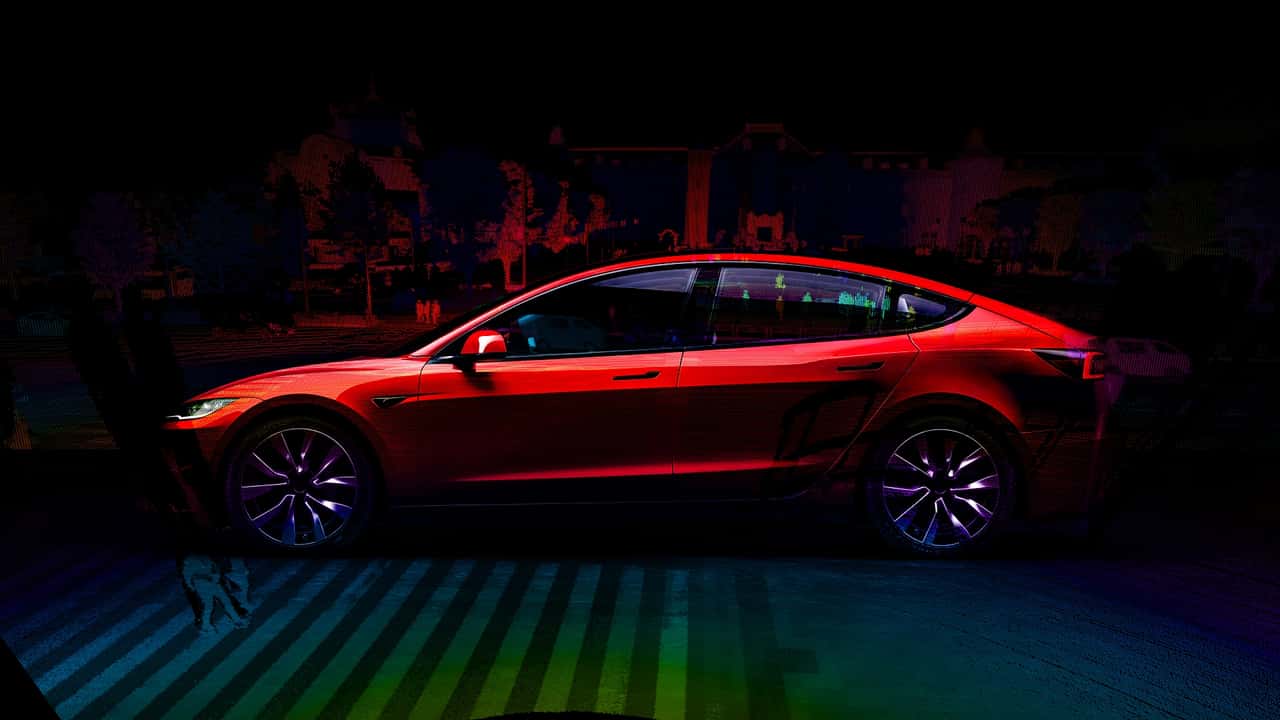Tesla, the company headed by a CEO who has called lidar a “crutch” and “fool’s errand,” spent at least $2 million on Lidar sensors in 2024—about 10% of the manufacturer’s revenue this quarter alone.
As reported by The Verge, that number comes directly from lidar maker Luminar, which revealed in its quarterly earnings report that Tesla was its top customer so far this year.
Get Fully Charged
Tesla’s Denial of Lidar
Tesla CEO Elon Musk has long been a proponent of vision-based driver assistance systems. In fact, he removed just about every sensor from the Model 3 for what the company called “Tesla Vision,” despite objections from consumers who say that the performance comes nowhere close to the ultrasonic sensor-equipped models of yesteryear. Now, Tesla is betting big that it can achieve full autonomy on vision alone—or is it?
Luminar says that Tesla represented around 10% of its $21 million quarterly income or around $2.1 million in sensor orders. Its sensors cost as much as $1,000 each. With some basic napkin path, Tesla’s orders work out to somewhere in the neighborhood of 2,100 sensors.
Tesla has used lidar in vehicles before, just not how you think. In 2021, a Tesla Model Y fitted with four Luminar Hydra units was spotted driving around. This was timed just as a partnership between Tesla and Luminar came to light via a Bloomberg report. It raised speculation about what Tesla could be doing with these Lidar units strapped to its otherwise Lidar-less car.
But that’s quite a reversal from Tesla, which has never had great things to say about the technology.
“What we’re going to explain to you today is that lidar is a fool’s errand,” said Musk during a 2019 investors’ event. “Anyone relying on lidar is doomed. Doomed. Expensive sensors that are unnecessary.”
It was later apparent that the company may have been performing validation mapping, which means comparing the data produced by Tesla’s vision-based systems to that of a Lidar sensor. However, 2,100 sensors seem like a tall order for validation mapping. At four sensors per car, this would work out to around 525 vehicles being fitted with these sensors.
To compound the curiosity, Musk replied on X to fan account Whole Mars Catalog by saying Tesla doesn’t need to use lidar for validation mapping purposes anymore, either.
So what the heck is Tesla doing with these Lidar sensors? Some speculate that the sensors might be used for Tesla’s upcoming Cybercab. Recent reports indicate that Tesla may be looking to launch its fleet of robotaxis in China all but immediately. Lidar in a new market would seem like a logical choice. Others believe the sensors could be used for Tesla’s humanoid robot, Optimus.
Or maybe it’s for something completely innocent like manufacturing or quality control—who knows? And if you ask Luminar their opinion, they seem to be just as in the dark as everyone else:
“This isn’t the first time that they’ve ordered Lidars from us,” said Luminar CEO Tom Fennimore during the company’s earnings call. “But I would say it’s been more lumpy than recurring. What exactly they’re doing with them, we can only speculate.”
Tesla, the renowned electric vehicle manufacturer, has made a name for itself by eschewing traditional automotive industry practices and embracing cutting-edge technologies. Despite this, Tesla has taken a firm stance against using Lidar technology in its autonomous driving systems. Lidar, an acronym for Light Detection and Ranging, is a remote sensing method that uses laser light to measure variable distances on Earth. Tesla’s CEO, Elon Musk, has been vocal about his skepticism towards Lidar, arguing that it is an unnecessary and costly addition to the company’s self-driving cars.
Despite Tesla’s strong anti-Lidar stance, it may come as a surprise to learn that the California-based company is actually the biggest customer of Luminar Technologies, a Lidar company at the forefront of developing advanced sensor technology for autonomous vehicles. Luminar’s Lidar technology is known for its long-range capabilities and high resolution, making it a highly sought-after solution for companies looking to enhance the safety and efficiency of their autonomous driving systems.
So, why is Tesla, a company known for shunning Lidar technology, now partnering with Luminar Technologies to integrate its Lidar sensors into its vehicles? The answer lies in Tesla’s commitment to providing the safest and most advanced autonomous driving technology on the market. While Musk may not be a fan of traditional Lidar systems, he has recognized the potential benefits of Luminar’s technology in enhancing the performance of Tesla’s self-driving cars.
By incorporating Luminar’s Lidar sensors into its vehicles, Tesla aims to improve the accuracy and reliability of its autonomous driving systems, ultimately enhancing the safety of its customers. The partnership between Tesla and Luminar represents a strategic move by the electric vehicle manufacturer to leverage the best technology available in the market to maintain its competitive edge in the rapidly evolving autonomous driving industry.
In conclusion, while Tesla may be anti-Lidar in principle, the company’s partnership with Luminar Technologies demonstrates its willingness to embrace innovative solutions that can help drive the development of its autonomous driving technology forward. By leveraging Luminar’s advanced Lidar technology, Tesla is poised to remain at the forefront of the autonomous driving revolution and continue to push the boundaries of what is possible in the realm of self-driving cars.

